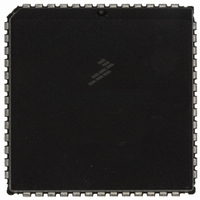MC68HC711E9CFNE2 Freescale Semiconductor, MC68HC711E9CFNE2 Datasheet - Page 162

MC68HC711E9CFNE2
Manufacturer Part Number
MC68HC711E9CFNE2
Description
IC MCU 8BIT 512RAM 52-PLC
Manufacturer
Freescale Semiconductor
Series
HC11r
Datasheet
1.MC68HC711E9CFNE3.pdf
(336 pages)
Specifications of MC68HC711E9CFNE2
Core Processor
HC11
Core Size
8-Bit
Speed
2MHz
Connectivity
SCI, SPI
Peripherals
POR, WDT
Number Of I /o
38
Program Memory Size
12KB (12K x 8)
Program Memory Type
OTP
Eeprom Size
512 x 8
Ram Size
512 x 8
Voltage - Supply (vcc/vdd)
4.5 V ~ 5.5 V
Data Converters
A/D 8x8b
Oscillator Type
Internal
Operating Temperature
-40°C ~ 85°C
Package / Case
52-PLCC
Processor Series
HC711E
Core
HC11
Data Bus Width
8 bit
Data Ram Size
512 B
Interface Type
SCI, SPI
Maximum Clock Frequency
2 MHz
Number Of Programmable I/os
38
Number Of Timers
8
Maximum Operating Temperature
+ 85 C
Mounting Style
SMD/SMT
Minimum Operating Temperature
- 40 C
On-chip Adc
8 bit
Lead Free Status / RoHS Status
Lead free / RoHS Compliant
Available stocks
Company
Part Number
Manufacturer
Quantity
Price
Company:
Part Number:
MC68HC711E9CFNE2
Manufacturer:
TE
Quantity:
12 000
Company:
Part Number:
MC68HC711E9CFNE2
Manufacturer:
FREESCAL
Quantity:
5 530
- Current page: 162 of 336
- Download datasheet (4Mb)
Serial Communications Interface (SCI)
7.10 Receiver Flags
Technical Data
162
interrupt mask for TDRE. When TIE is 0, TDRE must be polled. When
TIE and TDRE are 1, an interrupt is requested.
The TC flag indicates the transmitter has completed the queue. The
TCIE bit is the local interrupt mask for TC. When TCIE is 0, TC must be
polled. When TCIE is 1 and TC is 1, an interrupt is requested.
Writing a 0 to TE requests that the transmitter stop when it can. The
transmitter completes any transmission in progress before actually
shutting down. Only an MCU reset can cause the transmitter to stop and
shut down immediately. If TE is written to 0 when the transmitter is
already idle, the pin reverts to its general-purpose I/O function
(synchronized to the bit-rate clock). If anything is being transmitted when
TE is written to 0, that character is completed before the pin reverts to
general-purpose I/O, but any other characters waiting in the transmit
queue are lost. The TC and TDRE flags are set at the completion of this
last character, even though TE has been disabled.
The SCI receiver has five status flags, three of which can generate
interrupt requests. The status flags are set by the SCI logic in response
to specific conditions in the receiver. These flags can be read (polled) at
any time by software. Refer to
arbitration.
When an overrun takes place, the new character is lost, and the
character that was in its way in the parallel RDR is undisturbed. RDRF
is set when a character has been received and transferred into the
parallel RDR. The OR flag is set instead of RDRF if overrun occurs. A
new character is ready to be transferred into RDR before a previous
character is read from RDR.
The NF and FE flags provide additional information about the character
in the RDR, but do not generate interrupt requests.
The last receiver status flag and interrupt source come from the IDLE
flag. The RxD line is idle if it has constantly been at logic 1 for a full
character time. The IDLE flag is set only after the RxD line has been
Serial Communications Interface (SCI)
Figure
7-10, which shows SCI interrupt
M68HC11E Family — Rev. 3.2
MOTOROLA
Related parts for MC68HC711E9CFNE2
Image
Part Number
Description
Manufacturer
Datasheet
Request
R

Part Number:
Description:
APPENDIX A ELECTRICAL CHARACTERISTICS
Manufacturer:
FREESCALE [Freescale Semiconductor, Inc]
Datasheet:
Part Number:
Description:
Manufacturer:
Freescale Semiconductor, Inc
Datasheet:
Part Number:
Description:
Manufacturer:
Freescale Semiconductor, Inc
Datasheet:
Part Number:
Description:
Manufacturer:
Freescale Semiconductor, Inc
Datasheet:
Part Number:
Description:
Manufacturer:
Freescale Semiconductor, Inc
Datasheet:
Part Number:
Description:
Manufacturer:
Freescale Semiconductor, Inc
Datasheet:
Part Number:
Description:
Manufacturer:
Freescale Semiconductor, Inc
Datasheet:
Part Number:
Description:
Manufacturer:
Freescale Semiconductor, Inc
Datasheet:
Part Number:
Description:
Manufacturer:
Freescale Semiconductor, Inc
Datasheet:
Part Number:
Description:
Manufacturer:
Freescale Semiconductor, Inc
Datasheet:
Part Number:
Description:
Manufacturer:
Freescale Semiconductor, Inc
Datasheet:
Part Number:
Description:
Manufacturer:
Freescale Semiconductor, Inc
Datasheet:
Part Number:
Description:
Manufacturer:
Freescale Semiconductor, Inc
Datasheet:
Part Number:
Description:
Manufacturer:
Freescale Semiconductor, Inc
Datasheet:
Part Number:
Description:
Manufacturer:
Freescale Semiconductor, Inc
Datasheet:











